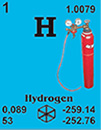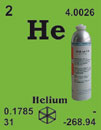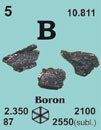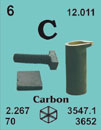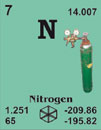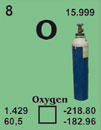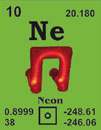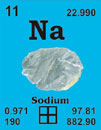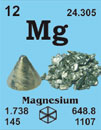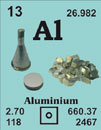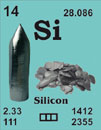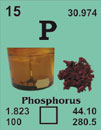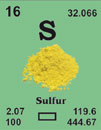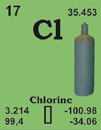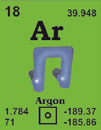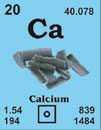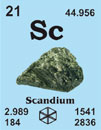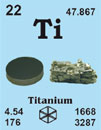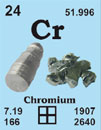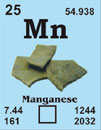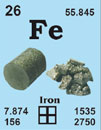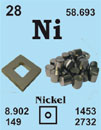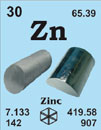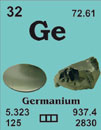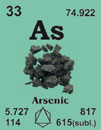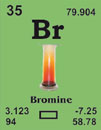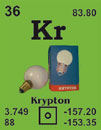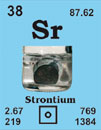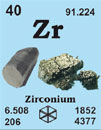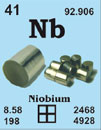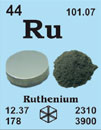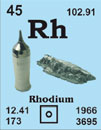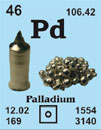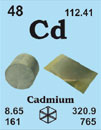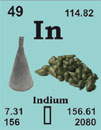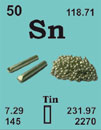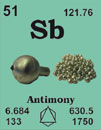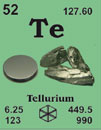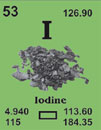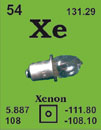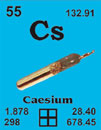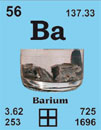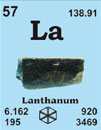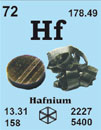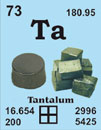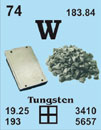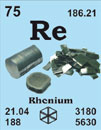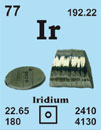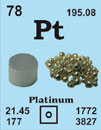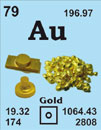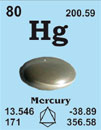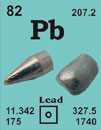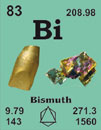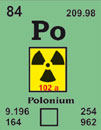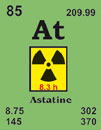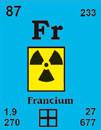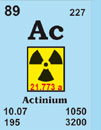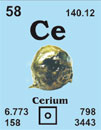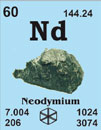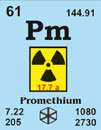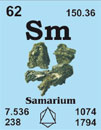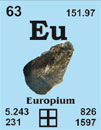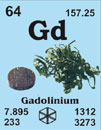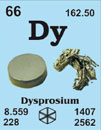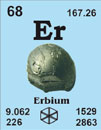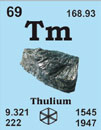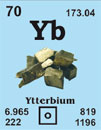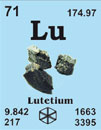Iridium 77Ir192.2
Discovered in 1803 by S. Tennant at London, England.
[Named after the indigo line in its spectrum]
French: iridium
German: iridium
Italian: iridio
Spanish: iridio
Description: Iridium is a hard, lustrous, silvery metal of the so-called platinum group. It is unaffected by air, water, and acids, but dissolves in molten alkali. Iridium is used in special alloys and spark plugs.
Iridium single crystal properties
| State: |
single crystal |
|---|
| Crystal structure: |
fcc |
|---|
| Production method: |
Floating zone |
|---|
| Standard size: |
diameter 8-10mm
thickness 1-2 |
|---|
| Orientation: |
(100), (110) and (111) |
|---|
| Orientation accuracy: |
<2°, <1°, <0.4° or <0.1° |
|---|
| Polishing: |
as cut, one or two sides polished |
|---|
| Roughness of surface: |
<0.03µm |
|---|
| Purity: |
99.99% |
|---|
| Typical analysis (ppm): |
C 3
H < 1
O 9
N < 5
Cu 1.60
Fe 1.80
Ni < 1
Pb 0.30
Si 0.30
Ga, Hf and Ta are below the detection limit
|
|---|
Materials properties
| Density: |
22.5 g/cm3 |
|---|
| Melting point: |
2409.85 °C / 2683 °K |
|---|
| Boiling point: |
4129.85 °C / 4403 °K |
|---|
| Molar volume: |
8.57 cm3 |
|---|
| Thermal conductivity: |
147 [300 K] Wm-1K-1 |
|---|
| Coefficient of linear thermal expansion: |
6.4 x 10-6 K-1 |
|---|
| Electrical resistivity: |
5.3x 10-8 [293 K] Wm |
|---|
| Mass magnetic susceptibility: |
+1.67 x 10-9(s) kg-1m3 |
|---|
| Young's modulus: |
528 GPa |
|---|
| Rigidity modulus: |
209 GPa |
|---|
| Bulk modulus: |
371 GPa |
|---|
| Poisson's ratio: |
0.26 |
|---|
| Radii: |
Ir4+ 66; Ir3+ 75; Ir2+ 89; atomic 136; covalent 12 |
|---|
| Electronegativity: |
2.20 (Pauling); 1.55 (Allred); 5.4 eV (absolute) |
|---|
| Effective nuclear charge: |
3.90 (Slater); 10.57 (Clementi); 15.33 (Froese-Fischer) |
|---|
| Number of Isotopes (incl. nuclear isomers): |
40 |
|---|
| Issotope mass range: |
170 -> 198 |
|---|
| Crystal structure, (cell dimentions / pm), space group |
fcc |
|---|
| X-ray diffraction: mass absorption coefficients: |
CuKα 193 (µ/r) / cm2g-1
MoKα 110 (µ/r) / cm2g-1 |
|---|
| Neutron scattering length: |
1.06 b/10-12 cm |
|---|
| Thermal neutron capture cross-section: |
425 sa / barns |
|---|
Biological data
| Biological role: |
none |
|---|
| Toxicity |
|
|---|
| Toxic intake: |
the pure metal is clinically inet; data on compounds is sparse. |
|---|
| Lethal intake: |
LD50 (chloride, oral, mouse) = 8.12 mg kg-1 |
|---|
| Hazards: |
Indium chloride is moderately toxic by ingestion, but most compunds are insoluble and not absorbed by the body. |
|---|
| Level in humans |
|
|---|
| Blood: |
n.a., but very low |
|---|
| Bone: |
n.a. |
|---|
| Liver: |
n.a. |
|---|
| Muscle: |
c. 2 x 10-5 p.p.m. |
|---|
| Daily dietary intake: |
n.a., but very low |
|---|
| Total mass of element in average [70 kg] person: |
n.a. |
|---|
Geological data
| Mineral | Formula | Density | Hardness | Crystal apperance |
|---|
| Iridium |
IR |
22.4 |
6 - 6.5 |
cub., met. white |
|---|
| Iridosmine |
(Os, Ir) |
20 |
6 - 7 |
hex., met. white/grey |
|---|
| Osmiridium |
(Ir, Os) |
20 |
6 - 7 |
cub., met. white |
|---|
| Chief ore: |
osmiridium; also found with platinum ores |
|---|
| World production: |
3 tonnes/year |
|---|
| Main mining areas: |
Canada for native element; see also platinum. |
|---|
| Reserves: |
n.a. |
|---|
| Specimen: |
available as foil, powder, spronge or wire. Safe. |
|---|
| Abundances |
|
|---|
| Sun: |
7.1 (relative to H = 1 x 1012) |
|---|
| Earth's crust: |
3 x 10-6 p.p.m. |
|---|
| Seawater: |
|
|---|
| Residence time: |
|
|---|
| Classification: |
|
|---|
| Oxidation state: |
|
|---|
Source: Emsley, J. (1998) The Elements (3rd Edition)

 English
English
 Deutsch
Deutsch

